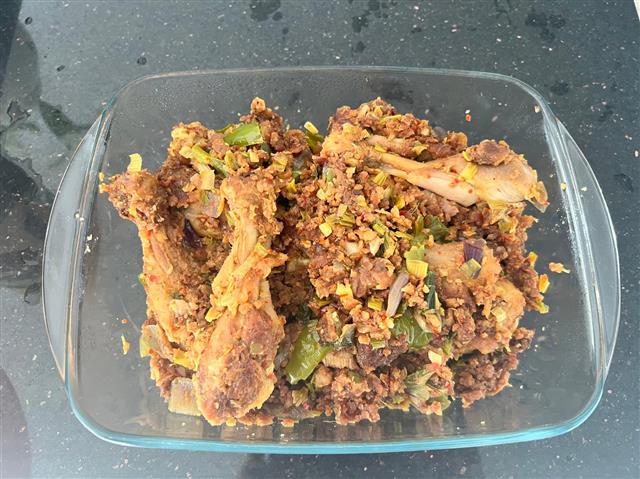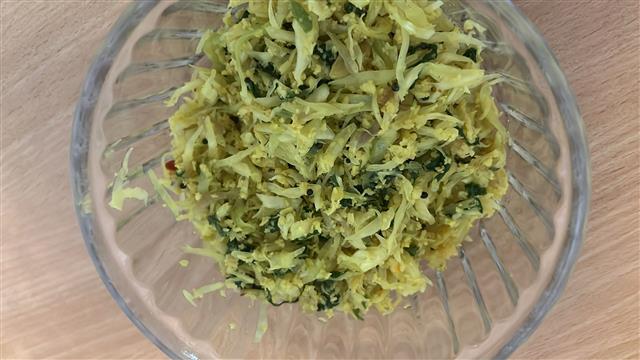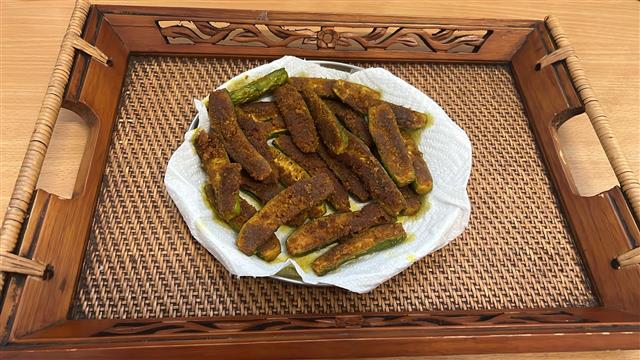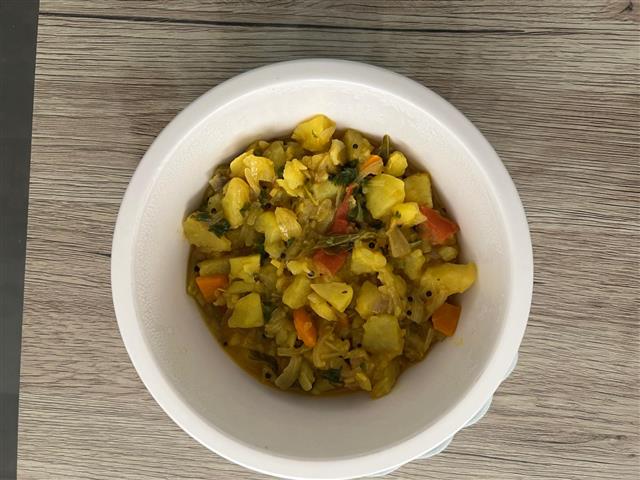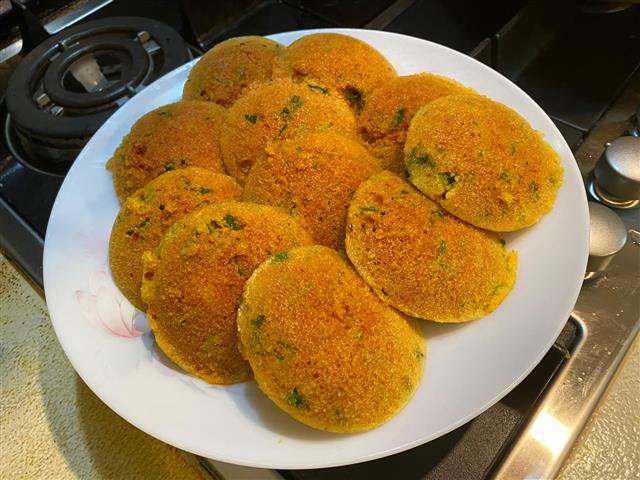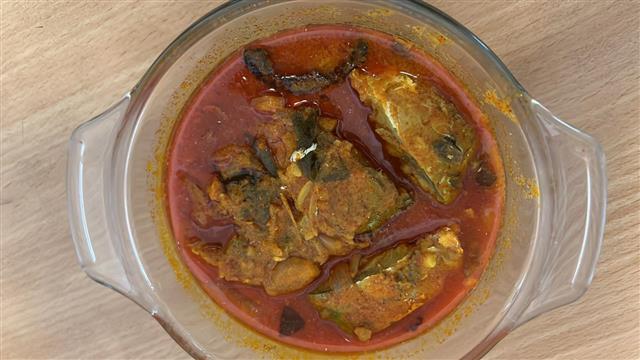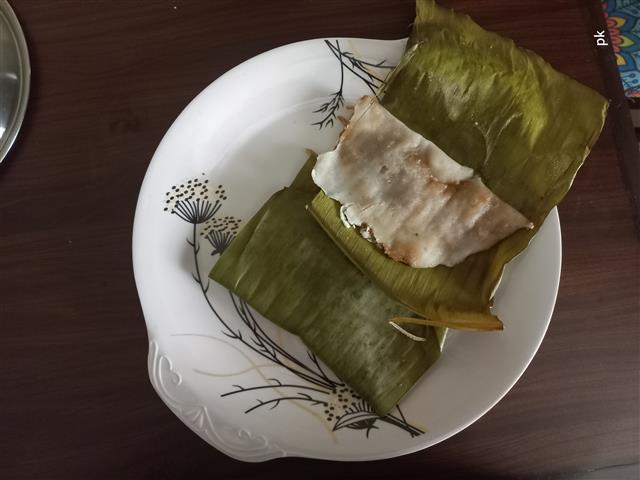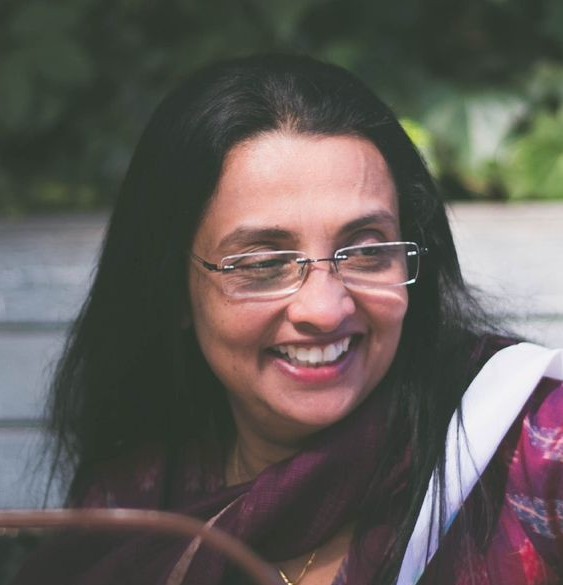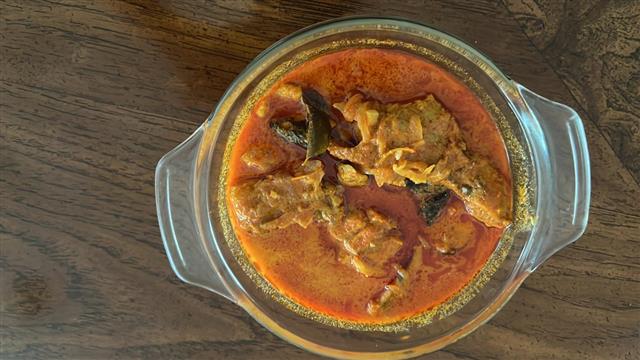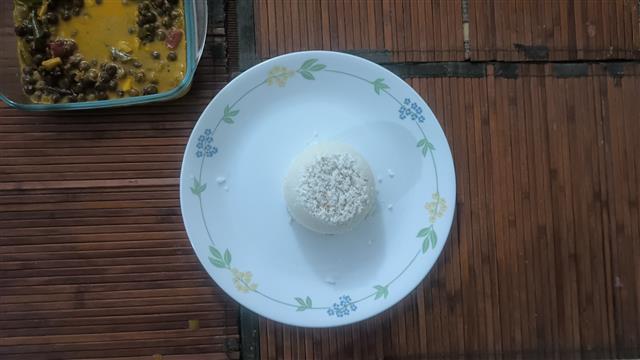
Egg Roast For Chappathi
(4 reviews)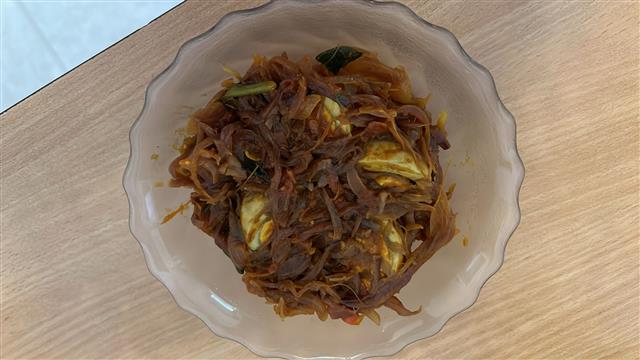
Mutta Roast for Chapati is a Kerala-style boiled egg dish where halved eggs are mixed in a thick onion and tomato masala.
Made with coconut oil, curry leaves, fennel powder, and meat masala, this dry or semi-dry version is perfect for chapathis and parottas.
A great lunch box, breakfast or light dinner option when you want something filling but without elaborate prepping.
Ingredients
Directions
- Slice the onion and chop the green chillies. Boil the eggs in enough water (the eggs should be fully covered) for 10 to 15 minutes on medium-high heat.
- Remove the eggs, peel the shells and cut each egg into two pieces.
- While the egg is boiling, heat oil in a frying pan. Add sliced onions, chopped green chilli, curry leaves and salt and saute well for 2 to 3 minutes.
- Add Kashmiri chilli powder, turmeric powder, fennel seeds powder, meat masala and saute well. When the onion is well cooked, add tomato and saute until it turns tender.
- When the masala is soft, turn off the flame and add the eggs. Serve with chapati.
- If you need a gravy, add hot water and cook little bit more.
Cooking Tips
• Choose room-temperature eggs. Boil them for at least 10 to get a firm yolk.
• Slice each boiled egg: Either into half so it absorbs the masala better.
• Slow cook the onions: Sauté onions on medium-low heat. They should be a rich golden brown.
• Always sauté spices in oil: The flavours bloom when the spices cook in the heated oil. Be careful not to burn the spices.
• Balance the tomato: Use just enough to soften the masala. Too much of it will make it tangy or saucy.
How to Serve
• Pair with appam, idiyappam, or puttu for breakfast or light dinner
• Serve with chapati or parotta for lunch or dinner
• Add as a protein-rich side dish to a bigger meal of rice, curry and thoran
The Story Behind Egg Roast For Chappathi
This dry Mutta Roast for Chapati is different from the usual egg roast or egg curry as there's no coconut milk or gravy base. You simply make an egg filling with roasted and spiced flavours that add spice in every bite and that signature Kerala touch.
What Is Egg Roast for Chapati?
Chapati Mutta Roast is a semi-dry egg masala preparation celebrates Kerala's rich tradition of roast-style dishes. Unlike North Indian egg curries that are gravy-based, the roast method in Kerala focuses on slow-cooked onions, gentle heat, and simple spices.
While you can add water to turn it into a gravy, this is more about the onion-tomato masala, and coconut oil. Spices like fennel powder, turmeric and meat masala (or garam masala) give it warmth and body, while the Kasmiri Chilli powder and curry leaves adda dash of colour . You can serve with appam, puttu or porotta, but this version is made to complement soft chapathi.
Ingredient Spotlight
Eggs: Rich in protein, B vitamins, and healthy fats. Keeps you full longer and pairs well with bold masalas.
Onions: Add sweetness and crispiness when slow-cooked. The base of Kerala-style roasts.
Tomato: Provides tangyiness acidity and softens the masala. Balances spice in the dish.
Fennel Powder: Adds a touch of sweetness. Balances the heat from chillies.
Meat Masala: A blend of garam masala, coriander, and roasted spices. Gives the dish its meaty depth without using meat.
Coconut Oil: The signature base fat in Kerala cuisine. Don't skip as it makes a huge difference in flavour.
Kashmiri Chilli Powder: Adds colour and mild heat. Lets the dish look vibrant without being overpowering.
Other Ways to Use Eggs in This Chapathi Roast Dish
Fried Boiled Eggs
Shallow-fry the halved eggs in a little oil with turmeric and chilli powder until the edges crisp up before adding them to the masala. This adds a smoky layer and texture.
Egg Bhurji (Scrambled Egg Roast)
Add beaten eggs directly into the masala at the end and stir until cooked. Makes a fuss-free chapathi roll filling.
Half-boiled Eggs
For a runnier yolk, cook eggs for 7–8 minutes and gently mix into the warm masala. Serve immediately to enjoy the gooey centre. Not suitable for lunchbox.
Regional Differences
Though the base recipe stays consistent across Kerala, there are small tweaks depending on the region:
Southern Kerala: Includes fennel powder and sometimes a splash of coconut milk. Curry leaves and mustard are must-haves.
Central Kerala: Onion-heavy version with green chillies, tomato, and often meat masala. Drier texture, and made specifically to go with chapathi or porotta. (Our version)
Malabar: Uses garam masala instead of meat masala and may include crushed black pepper. Sometimes, made richer with the addition of ghee or even roasted coconut paste.
Hotel-style: Often spicier, redder, and served with soft porottas. Some versions even fry the eggs slightly before adding to the masala.
Pro Tips for Perfect Results
→ Allow the tomatoes to cook fully: This ensures the masala is well-cooked.
→ Don't boil the eggs in the curry for too long: They'll turn rubbery and lose their taste.
→ Use the right masala powder: Meat masala (not garam masala) gives a depth of flavour.
Egg Roast For Chappathi Variations
- With Coconut Milk
Add 2 tablespoons of thin coconut milk at the end for a creamy gravy version.
- Spicier Version
Add crushed pepper or a second green chilli.
- With Dried Fenugreek Leaves
A pinch of dried fenugreek leaves adds a sharp note.
- With Ginger and Garlic
Thin slices of ginger can be added along with garlic paste for more depth.
- Chopped Capsicum or Spinach
Stir-fry along with onion if you want added colour and nutrition
Storing & Reheating Tips
→ Fridge: Store in an airtight container for up to 2 days.
→ Reheat: Heat on a low flame. Add some hot water to thin out the gravy version.
Tip: If you have doubled or tripled the recipe, reheat only what you need.
→ Freeze: Not preferred, as the egg whites will be watery when thawed and the yolks turn dry and grainy.
Tip: Prep the masala base and freeze it. And refrigerate the boiled eggs (in the shell) for up to a week.
Common Mistakes to Avoid
→ Overcooking the boiled eggs.They turn rubbery and absorb less masala.
→ Rushing the onion masala. Needs slow cooking for that deep roast flavour.
→ Skipping fennel/meat masala. These balance the chilli and give body to the dish.
→ Using too much tomato. It'll turn into curry instead of a roast.
Frequently Asked Questions
- Can I add garam masala instead of meat masala?
Meat masala is preferred for this dish, but garam masala or any other spice mix works.
- Can I pack this in a lunchbox?
Sure. Wrap it in foil or parchment paper and include a small chutney or sauce on the side.
- Can I make it without egg?
Of course. Use egg shaped paneer or tofu slices for a vegan side.
- Can I add vegetables?
Absolutely. Add carrots, peas, sweet potato or even cooked chickpeas, but these are optional.
- Is this dish spicy?
Mildly spicy. You can remove green chilli if you're making for small kids or people who can't tolerate heat.
- Can I make this ahead of time?
Yes. Make the masala a day in advance and reheat with the eggs just before serving.
- Can I use other store-bought masala?
Yes, but adjust the salt and chilli based on the spice blend you use.
Equipment Needed
→ Knife & Cutting Board – For prepping vegetables
→ Heavy-bottomed pan or kadai
→ Saucepan pan to boil the eggs
→ Slotted spoon to remove the eggs without breaking
→ Wooden or silicone spatula
